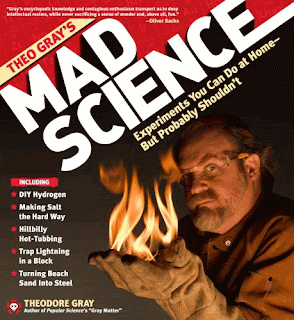 The 1996 memo from the AMSC JAG wasn't the first effort to keep quiet the information about harmful effects of dioxin. Very early in the development of Agent Orange dioxins, a researcher named Rowe sent a memo to Ross Mulholland, a manager with Dow in Canada, informing him that dioxin "is exceptionally toxic, it has a tremendous potential for producing chloracne (a skin disorder similar to acne) and systemic injury." Rowe ordered Mulholland in a postscript to the letter that "Under no circumstances may this letter be reproduced, shown or sent to anyone outside of Dow."
The 1996 memo from the AMSC JAG wasn't the first effort to keep quiet the information about harmful effects of dioxin. Very early in the development of Agent Orange dioxins, a researcher named Rowe sent a memo to Ross Mulholland, a manager with Dow in Canada, informing him that dioxin "is exceptionally toxic, it has a tremendous potential for producing chloracne (a skin disorder similar to acne) and systemic injury." Rowe ordered Mulholland in a postscript to the letter that "Under no circumstances may this letter be reproduced, shown or sent to anyone outside of Dow."  Among those in attendance at one of the meetings of chemical company officials was John Frawley, a toxicologist for Hercules, Inc. In an internal memorandum for Hercules officials, Frawley wrote in 1965 that Dow was concerned the government might learn of a Dow study showing that dioxin caused severe liver damage in rabbits. Dow was concerned, according to Frawley, that "the whole industry will suffer." Frawley said he came away from the meeting with the feeling that "Dow was extremely frightened that this situation might explode" and lead to government restrictions.
Among those in attendance at one of the meetings of chemical company officials was John Frawley, a toxicologist for Hercules, Inc. In an internal memorandum for Hercules officials, Frawley wrote in 1965 that Dow was concerned the government might learn of a Dow study showing that dioxin caused severe liver damage in rabbits. Dow was concerned, according to Frawley, that "the whole industry will suffer." Frawley said he came away from the meeting with the feeling that "Dow was extremely frightened that this situation might explode" and lead to government restrictions.
The concern over dioxins was kept quiet and largely out of the public view. The U.S. government (trying hard to believe whatever science reports best fit national security) and the chemical companies presented a united front on the issue of defoliation, claiming it was militarily necessary to deprive the Viet Cong of hiding places and food sources and that it caused no adverse economic or health effects to those who came into contact with the rainbow herbicides, particularly Agent Orange.
AIR FORCE KNEW OF HEALTH DANGER
But, scientists involved in Operation Ranch Hand and documents uncovered between 2000 and 2006 in the National Archives present a somewhat different picture. There are strong indications that not only were many military officials aware as early as 1967 of the limited effectiveness of chemical defoliation, they knew of potential long-term health risks of frequent spraying and sought to keep that information from the public by managing news reports. Further, even the initial 1962 aircraft testing of Agent Orange spray operations indicated the C-123K would remain contaminated on the outside skin of the aircraft.
Dr. James Clary was an Air Force scientist in Vietnam who helped write the history of Operation Ranch Hand. Clary says the Air Force knew Agent Orange was far more hazardous to the health of humans than anyone would admit at the time.
"When we (military scientists) initiated the herbicide program in the 1960s," Clary wrote in a 1988 letter to a member of Congress investigating Agent Orange, "we were aware of the potential for damage due to dioxin contamination in the herbicide. We were even aware that the `military' formulation had a higher dioxin concentration many times more lethal than the `civilian' version, due to the lower cost and speed of manufacture. However, because the material was to be used on the `enemy,' none of us were overly concerned. We never considered a scenario in which our own personnel would become contaminated with the herbicide. And, if we had, we would have expected our own government to give assistance to veterans so contaminated."
One of the approaches we're coming across as we put forward the claim that flying the C-123K/UC-123K post-Vietnam exposed us to dioxins is a response "that's a controversial subject still under consideration." Actually, there is NO controversy to the contamination of the aircraft, NO controversy about the toxicity of dioxin, and NO controversy about the ill effects of dioxin exposure. The effort to suggest "controversy" is akin to the tobacco companies years ago claiming that cigarettes "are an adult custom, and any health effects are a matter of controversy and current studies."
Sorry, bud, that shell-game shuffle won't cut it here!


No comments:
Post a Comment
Got something to share? Nothing commercial or off-topic, please.